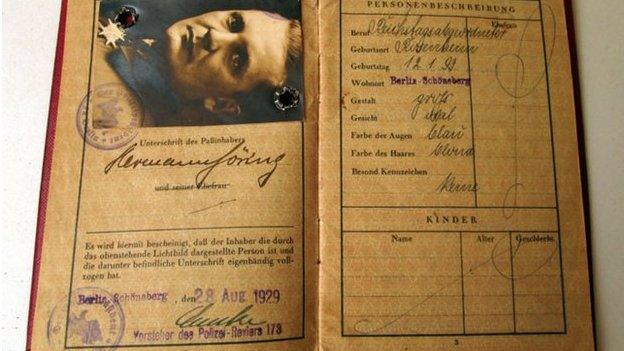Nazi toys expected to raise thousands at Thornaby auction
- Published

A collection featuring thousands of figures, tanks and play sets from Nazi Germany is being auctioned on Teesside
Innocent toys or indoctrination tools? As hundreds of Nazi figures go up for sale, an auctioneer tackles the moral dilemma of selling such controversial play pieces.
They look much like any other military toys - camouflaged tanks, soldiers in fighting stances and armoured bunker play sets.
But these were the toys given to children of the Third Reich - miniatures of Adolf Hitler and his henchmen, armies and vehicles bedecked in swastikas.
They have all come from the collection of the late Richard Wilkinson, an American who spent his life buying German toys after his father first got him some on a business trip in the 1930s.
Military cataloguer Simon Clark spent three months dividing them into 250 lots ahead of their sale at Vectis Auctions in Teesside on Wednesday, external, with hundreds more sold last year.
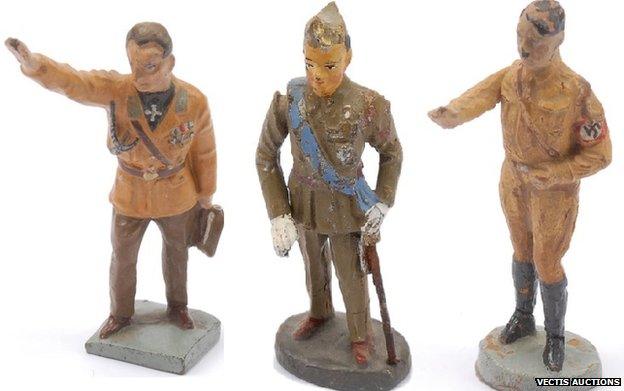
Children could play with figures of Goering, Franco and Hitler
He accepts selling Nazi toys is controversial, possibly distasteful or offensive to many, but Mr Clark said they were important.
He said: "People do ask how can we sell these things, but the fact is they are a part of history.
"They may certainly be from an unpalatable period but we cannot just take out and keep the pieces of history that we like, it doesn't matter if it's nice history or not, it still needs to be remembered.
"We are not glorifying it, we are just presenting it for what it is."
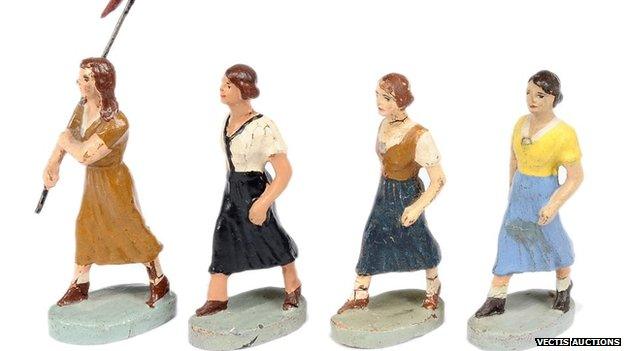
Although most of the toys were aimed at boys, Elastolin also made figures of girls dressed in the Hitler Youth uniform to appeal to females
The toys were made by two companies, Elastolin Hausser and Lineol, from a then-revolutionary composite of sawdust and resin around a metal frame.
It is their unusual make up that is making them much harder to find. Damp causes the metal frame inside to swell, in turn cracking the composite exterior.
But they were highly engineered models - the large guns fired, the soldiers' rifles released puffs of smoke, trucks had their own miniature jacks and Lineol even made a remote control tank.
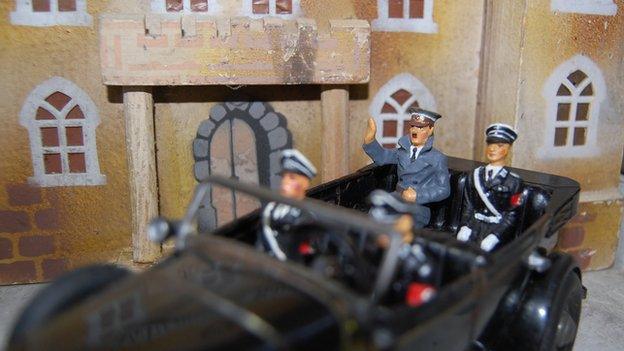
Elastolin Hausser and Lineol also made toy zoos, farms and characters from the wild west
Mr Clark said: "They were incredibly accurate to the real things, the vehicles looked like the real versions, so did the guns, so there is a real historical interest in them as representations of the real world."
Malcolm Fisher is an expert in war memorabilia and runs Regimentals, one of the biggest dealers in militaria in the UK.
On his website you can buy original items from as far back as the 18th Century, but much of his business is material from World War Two, and much of that is German.
He is pretty sure about the kind of bidders the toy collection will attract - genuine toy lovers not "cranks".
'Genuine collectors'
"Nazi cranks go to websites run by other cranks and buy things like T-shirts. Those interested in these highly desirable items will be genuine toy collectors and specialists - they are after all made of glue and sawdust", he explained.
Mr Fisher said the lots may not reach their predicted price because of the whole antiques market going "off the boil" generally.
He said: "The market is struggling - Mr Average is being squeezed money-wise. Also I think with this toy collection there may not be a new generation of people growing up interested in this period of history."
Lot 4175 is a Lineol bridge model that would have sold for around 900 Reichsmarks, the equivalent of a weeks wages.
It is now valued at between £5,000 and £7,000, the most expensive toy in the collection.
Mr Clark said: "Because it was so expensive they sold very few sets, also from a child's point of view it was actually a bit boring.
"Children wanted soldiers and tanks, not bridges."
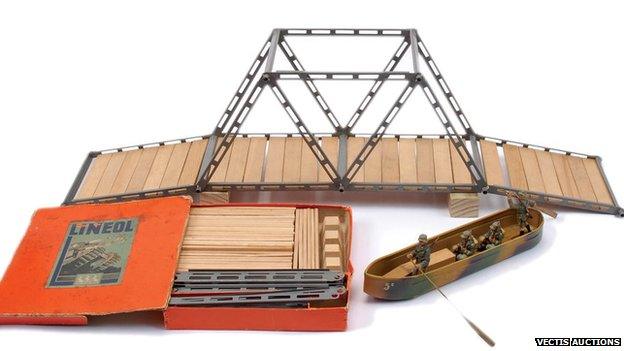
The Lineol bridge is valued at between £5,000 and £7,000 because it was very expensive and, as it was "a bit boring", it became very rare
The Hitler figures are valued at between £35 and £70 each, they would have sold for between five and 15 reichsmarks in the 1930s.
But were they made to entertain children or ingrain them with a Nazi mindset?
"Both", said Mr Clark, adding: "Once we got into the late 1930s it was very difficult to tell the difference between toys and political propaganda."
Pictures of Rudolf Hess and his son playing with a toy artillery gun adorned adverts, Nazi dignitaries were photographed touring toy factories and Hitler himself dictated how the models should be made.
Mr Clark said: "Hitler did not like the toy of him, he did not like the face, so he had the toy manufacturers employ doll makers to fashion porcelain heads that bore a truer resemblance to him."

Military cataloguer Simon Clark admitted the toys are unpalatable but said they were a part of history that cannot be forgotten
More than 20 different versions of the Fuehrer were produced in a multitude of uniforms, many of which had a right arm which could be raised to give the Nazi salute.
Swastika-adorned lecterns were also produced so children could recreate Hitler's rallies on their bedroom floors.
The Nazi regime could also stop toys being made - after Ernst Roehm was executed, toy makers were ordered to stop making toys of him.
Mr Clark said interest will be high from collectors predominantly in the US, and the whole collection could reach a six-figure sum.
He said: "It is an unusual collection, it is not everyday you see something like this."
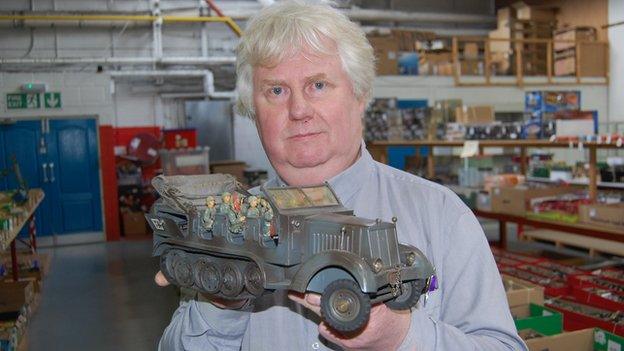
Simon Clark said it was unusual to find German toys in such a good condition
- Published14 April 2014
